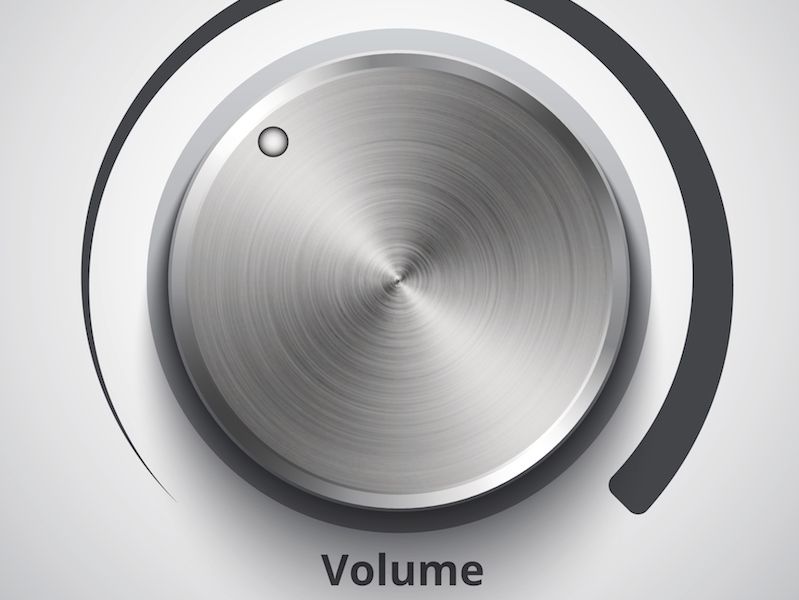
Have you ever gone to the beach and noticed one of those “Beware of Shark” warning signs? It’s not hard to realize that you should never ignore a warning like that. You might even rethink swimming at all with a sign like that (if the warning is written in big red letters that’s especially true). Inexplicably, though, it’s harder for people to listen to warnings concerning their hearing in the same way.
Recent research has found that millions of people neglect warning signs regarding their hearing (there’s no doubt that this is a global challenge, though this research was exclusively carried out in the United Kingdom). Awareness is a big part of the issue. Fear of sharks is pretty instinctive. But being afraid of loud noise? And how do you know how loud is too loud?
Loud And Hazardous Sound is Everywhere Around us
Your hearing isn’t just in danger at a rock concert or on the floor of a machine shop (although both of those situations are, indeed, dangerous to your hearing). Many common sounds are potentially dangerous. That’s because the duration of sound is as dangerous as the volume. Even low-level sounds, like dense city traffic, can be harmful to your ears if you are exposed for more than a couple of hours.
Generally, here’s a rough outline of when loud becomes too loud:
- 30 dB: This is the sound level you would find in normal conversation. You should be perfectly fine at this level for an indefinite length of time.
- 80 – 85 dB: This is the sound level of heavy traffic, lawn equipment, or an air conditioning unit. This volume will usually become dangerous after two hours of exposure.
- 90 – 95 dB: A motorcycle is a good illustration of this sound level. 50 minutes is enough to be harmful at this volume.
- 100 dB: This is the level of noise you may encounter at a mid-size sports event or an approaching subway train (of course, this depends on the city). 15 minutes of exposure will be enough to be unsafe at this volume.
- 110 dB: Have you ever cranked your Spotify music up to ten? On most smartphones, that’s about this level. 5 minutes will be enough to be unsafe at this volume.
- 120 dB and over: Anything over 120 dB (think loud rock concerts or extremely large sporting events) can result in instant injury and pain in your ears.
What Does 85 Decibels Sound Like?
Generally, you should look at anything 85 dB or above as putting your ears in the danger zone. But it can be hard to know how loud 85 dB is and that’s the issue. It’s not tangible in the way that a shark is tangible.
And hearing warnings commonly get neglected because of this especially when the sound environment isn’t loud enough to cause pain. There are a couple of potential solutions to this:
- Suitable signage and training: This goes for workspaces, in particular. Signage and training can help reinforce the real dangers of hearing loss (and the benefits of hearing protection). Additionally, just how noisy your workplace is, can be made clear by signage. Training can help employees know when hearing protection is required or suggested.
- Download an app: Your hearing can’t be directly safeguarded with an app. But there are a number of free apps that can function as sound level monitors. It’s difficult to assess what 85 dB feels like so your hearing can be damaged without you even realizing it. The answer, then, is to have this app open and monitor the sound levels around you. Utilizing this approach will make it more instinctual to identify when you are moving into the “danger zone”. (Or, the app will simply alert you to when things get too loud).
When in Doubt: Protect
Signage and apps aren’t a foolproof answer. So if you’re in doubt, take the time to safeguard your hearing. Noise damage, over a long enough time period, can result in hearing loss. And it’s easier than ever to damage your ears (all you have to do is turn your headphone volume up a little too loud).
You shouldn’t increase the volume past mid way, specifically if you’re listening all day. If you keep turning it up to hear your music over background noise you should find different headphones that can block out noise.
So when volume becomes too loud, it’s important to accept it. Increasing your own knowledge and awareness is the answer if you want to do that. It isn’t hard to limit your exposure or at least use hearing protection. But you have to know when to do it.
That should be easier today, too. Especially now that you know what to look for.
Think you could have hearing loss? Schedule a test.